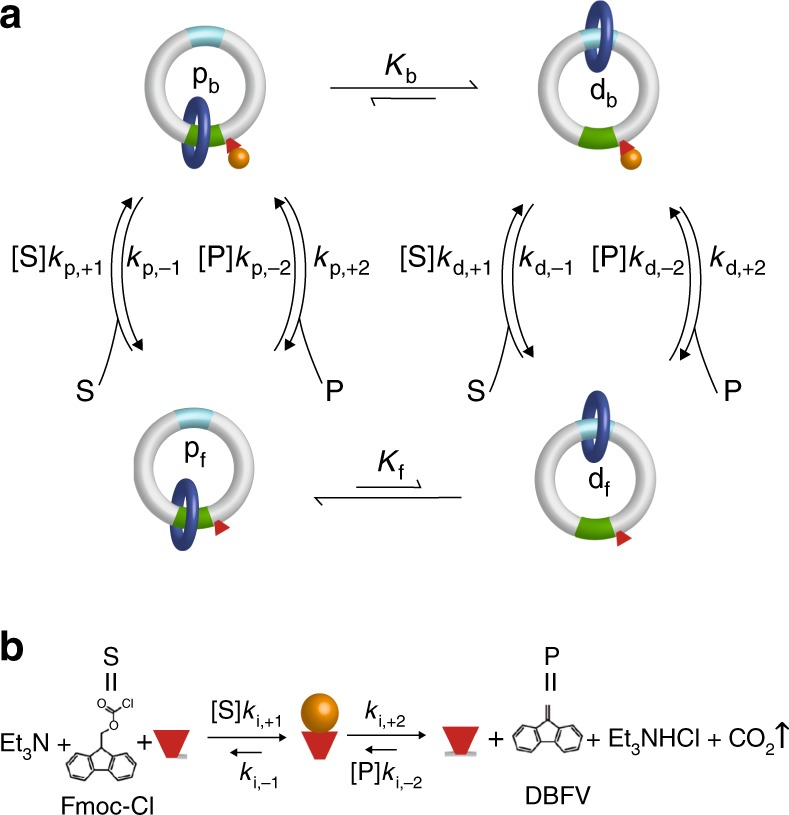Fig. 3.

Four state synthetic rotor driven by a catalyzed reaction. a The rotor is based on that of Wilson et al.29 where a small benzylic amide macrocycle, shown as a dark blue ring, undergoes switching transitions between two different recognition sites, one shown as green and the other aqua. A catalytically active moiety near the green recognition site facilitates conversion of Fmoc-Cl to DBFV by a reaction shown in b. The symbol “p” indicates proximal, “d” indicates distal, “b” indicates that the catalytic site is bound, and “f” indicates that the catalytic site is free. The chemical potential difference driving conversion of Fmoc-Cl to DBFV under the experimental conditions of Wilson et al.28 is , slightly greater than the chemical potential difference driving ATP hydrolysis under physiological conditions, so the reaction is “far from equilibrium”. A key question is whether the blue ring undergoes clockwise or counter-clockwise rotation and what properties determine the direction of rotation?
